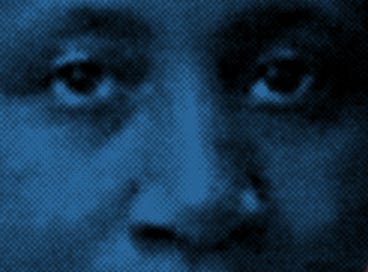Swimming upstream: Mary A. and the task of remembering differently
A photograph of a Black Edwardian woman sparks an artist's historical research.
By Chantal Oakes
Textual research practice is a vital component in creative production. Not just because it can fall into theoretical frameworks, where underlying political and social context illuminate something of the connections between an art object, and the cultural framework that surrounds or surrounded the object’s production. Although, this is an important element of why research is undertaken.
For me, as a practicing artist, textual research is particularly important because the Black British community is still scrambling for safe footing in a country-of-birth that has problems with equity. Whether text or image, creativity has a part to play in supporting these efforts.
Research for this project started with a photograph. An Edwardian working class woman sitting next to a mirror angled to also reveal the side of her face. The photograph was taken in Lancashire in the early 1900s, for the purposes of a study – amateur or professional, no one knows, but it was one of many in an album kept in the Lancashire Archives, in Preston.
The reason the photograph came to light was because the woman was a young Black British woman and, the archivist thought, the earliest photograph of an ordinary Black woman they held. Making the object - the photograph - extraordinary.
When I saw the photograph I fell for what is now called ‘time-space compression’, whereby technology has superficially caused the world to shrink, and things that happened last year are seemingly amalgamated with things that happened hundreds of years ago. It’s all there together; a collapse of the brick and dust of classical architecture and its various later extensions. In the midst of this historical soup, Black women have had it rough in the Western world for centuries.
Reference artwork: John Akomfrah ‘Last Angel of History’ (1995)
From within the affective and material context outlined above, the photograph made me assume that the young woman had been alone and brutalised, and the only way to know if that emotional response held true was to learn her real story. The typical narrative for Black imagery and the habitual response it engendered wasn’t emotionally satisfying. And so, much later and from a different perspective I can say – ‘what a story!’




